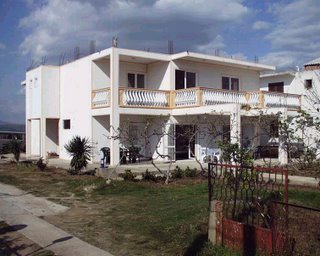HOTELS NE ULQIN
VILLA NE ULQIN
| Villa Burri - Montenegro Kontaktoni në ket numër telefoni:++32 2 253 75 22 Villa Curanovi - Montenegro Fjetja per nji person 7 € email: curaniali@hotmail.com   Villa Oaza - Montenegro Fjetja per nji person 7 € Kontaktoni në ket numër telefoni: ++381 85 455 297   |
PLAZHA E MADHE - Montenegro
ULQIN HISTORY-Montenegro
GEOGRAPHY-Montenegro
| Located in south-eastern Europe the tiny republic of Montenegro has an amazing 300km long coastline with 117 stunning beaches totalling 73 km in length. With its mild Mediterranean climate and about 240 sunny days each year Montenegro is a beach-lover’s paradise. It’s a land blessed by exceptional versatility and colourful contrasts with unmatched natural beauty and centuries of traditions, still visible in the small villages along the coast. All that, combined with some of the finest beaches imaginable, the calm turquoise waters of the Adriatic and the hospitality of the local people make Montenegro the undisputed pearl of Europe. There are some great holiday destinations in Montenegro. Seaside stone-built towns in a sunny blue bays with lovely beaches of small pebbles and coarse sand, guarded by the lofty peaks of the Montenegrin mountains. Sub-tropical climate with lush flowers and shrubs, olives and mimosas growing in the brilliant sunshine. A trully hospitable and relaxing atmosphere which dappled by the open-air stages, festivals and celebrations make the summer in Budva, Petrovac and Becici an ever lasting moment. The town is located near the border with Albania on the coast of the Adriatic Sea. The Bojana Ada island is located at Montenegro's border with Albania, and is formed by the Bojana river splitting in two. Ada Bojana is a nudist colony which played host to English, Dutch, and most significantly German tourists in the 70's and 80's until the civil war and the break up of the formar Yugoslavia. Today, Ulcinj is a popular tourist destination for the Kosovo Albanians because Kosovo is land locked, and no visa is needed for Kosovar Albanians to enter Montenegro. |
ULQIN - Montenegro
 Ulcinj/Ulqin stands at the southernmost end of the Montenegrin coast. The place has been inhabited since prehistoric times and Illyrian tombs, found in the village of Zogaj, in the vicinity of Ulcinj, date back to the Bronze Age. The city was founded in the 5th BC by Greeks from Colchidia and thus named Colchinium. Parts of the cyclopean walls they built remain in the old city but I have not spotted them. When the Roman took the city from the Illyrian tribe of the Olciniates, it became Olcinium. Later, it became successfully part of the Byzantine empire, of the Serbian Empire (12th to 14th), of the Venetian Republic (1405-1571), of the Ottoman Empire (1571-1880) under the name of Olgun. At the end of the 16th, Uluz Ali, vice-king of Algiers and pirate established 400 of its men in Ulcinj that remained for almost a century a pirates' base. In 1880, the town belonged to Montenegro and since 1920 to Yugoslavia. It is now part of the Serbia and Montenegro Federation (Serbia i Crna Gora = SCG). Ulcinj/Ulqin stands at the southernmost end of the Montenegrin coast. The place has been inhabited since prehistoric times and Illyrian tombs, found in the village of Zogaj, in the vicinity of Ulcinj, date back to the Bronze Age. The city was founded in the 5th BC by Greeks from Colchidia and thus named Colchinium. Parts of the cyclopean walls they built remain in the old city but I have not spotted them. When the Roman took the city from the Illyrian tribe of the Olciniates, it became Olcinium. Later, it became successfully part of the Byzantine empire, of the Serbian Empire (12th to 14th), of the Venetian Republic (1405-1571), of the Ottoman Empire (1571-1880) under the name of Olgun. At the end of the 16th, Uluz Ali, vice-king of Algiers and pirate established 400 of its men in Ulcinj that remained for almost a century a pirates' base. In 1880, the town belonged to Montenegro and since 1920 to Yugoslavia. It is now part of the Serbia and Montenegro Federation (Serbia i Crna Gora = SCG). This photo is not the best but allows understanding how the city developped. The oldest part of the city was destroyed by an earthquake in 1444 and its ruins can be seen underwater. Stari Grad, the new old city, was built by the Byzantines and the Nemacic on Bijela Gora, a high peninsula from where this photo was taken. The city walls were built in the 13th. The city later grew outside of the city walls, along the beach, at the bottom of the bay and thus looks like an amphitheater. Still later, it grew up in the narrow valley at the bottom of the bay (left of the photo) and (not seen on the photo) extended behind those mountains, where is now most of the modern town, that does not face the sea. Balkan Holidays |








